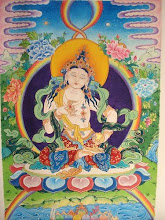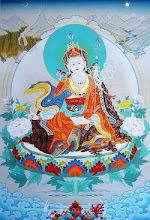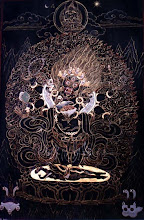A few weeks after I was offered a position on the JET Programme, I received a package of orientation materials, including a letter informing me of my posting to Himeji. With the country's oldest existing castle, Himeji is known to most Japanese, kind of like most Americans have heard of Gettysburg. Not many make the trip.
 I checked the indexes of a couple of Japanese histories, textbooks from my university Asian history courses, but there was no mention of Himeji. A day or two later I stopped by the library to see what I could learn; about the only reference I recall finding was in a Japanese geography text, which gave me a run down on population trends, industries and crafts, transportation, and other such data. Not really the kind of stuff to get you excited about your new home. Through an atlas I found Himeji located not too far from Osaka. Some days or weeks later someone at the Himeji board of education sent some tourist pamphlets, complete with photos of the castle and other areas of town, my first visual introduction to the city where I would live for the next five years. I was also given the postal addresses of the JET teachers then working in Himeji, with whom I was invited to communicate to learn what kind of things I might need to bring with me and how I might otherwise prepare for my new job and home.
I checked the indexes of a couple of Japanese histories, textbooks from my university Asian history courses, but there was no mention of Himeji. A day or two later I stopped by the library to see what I could learn; about the only reference I recall finding was in a Japanese geography text, which gave me a run down on population trends, industries and crafts, transportation, and other such data. Not really the kind of stuff to get you excited about your new home. Through an atlas I found Himeji located not too far from Osaka. Some days or weeks later someone at the Himeji board of education sent some tourist pamphlets, complete with photos of the castle and other areas of town, my first visual introduction to the city where I would live for the next five years. I was also given the postal addresses of the JET teachers then working in Himeji, with whom I was invited to communicate to learn what kind of things I might need to bring with me and how I might otherwise prepare for my new job and home.
 I promptly typed up a form letter on my new Macintosh SE, then made slight adjustments to personalize letters for each recipient. I printed these out and got them in the mail right away. It would take them at least a week to reach Japan, and assuming my correspondents were prompt, a week to receive a reply. I remember getting a couple letters in return, the unusual looking stamps on the thin-papered airmail envelopes. It was a relief to hear from other foreigners who were not only surviving but thriving in their work, reassurance that I would likewise do just fine, but in the time available we could exchange no more than two or three letters each.
I promptly typed up a form letter on my new Macintosh SE, then made slight adjustments to personalize letters for each recipient. I printed these out and got them in the mail right away. It would take them at least a week to reach Japan, and assuming my correspondents were prompt, a week to receive a reply. I remember getting a couple letters in return, the unusual looking stamps on the thin-papered airmail envelopes. It was a relief to hear from other foreigners who were not only surviving but thriving in their work, reassurance that I would likewise do just fine, but in the time available we could exchange no more than two or three letters each.
This was all I learned about Himeji and my job in the few months I had before leaving for Japan. Even at an orientation session in Atlanta no one could tell me a thing about Himeji except that it had a very cool castle. I knew of only two or three people there, one of the them my boss, the others JET teachers like myself who had already been in Himeji for at least a year. I met all them through the post.
Which is typically how people over such distances used to meet and communicate. After arriving in Himeji with what was then considered a portable computer, a Mac SE with a handle built into the case, I designed semi-regular newsletters about my Japan experience for friends and family in the US. These I photocopied, folded, and stuffed in hand-written envelopes, which I would then deliver to the post office. A typical mailing cost around 3000-5000yen, depending on page count.
 My mother and a couple of other friends would on occasion send newspaper clippings of Atlanta happenings. National and international news was more easily available through the many English language dailies from Japan's newspaper publishers. In Himeji at that time there were no English-language television broadcasts, though there was in town on the main shopping street a Maruzen, a national bookstore chain carrying overpriced copies of imported newspapers, magazines, and books. The selection was, however, extremely thin, Himeji being a small city with not many foreigners. If you wanted a better (though hardly satisfactory) selection of books and magazines, you had to get on the train to Kobe or Osaka.
My mother and a couple of other friends would on occasion send newspaper clippings of Atlanta happenings. National and international news was more easily available through the many English language dailies from Japan's newspaper publishers. In Himeji at that time there were no English-language television broadcasts, though there was in town on the main shopping street a Maruzen, a national bookstore chain carrying overpriced copies of imported newspapers, magazines, and books. The selection was, however, extremely thin, Himeji being a small city with not many foreigners. If you wanted a better (though hardly satisfactory) selection of books and magazines, you had to get on the train to Kobe or Osaka.
 One thing Himeji had plenty of were video shops renting VHS tapes. But much like the bookstores, the selection was limited, in this case to to the most recent Hollywood hits. There were very few films from countries outside Japan or the US, and you never saw row after row of shelves of multi-volume television series. In the early days after my move to Japan my father would send weekly video tapes of Monday Night Football and a new television series called Twin Peaks. Those tapes were a hot commodity at Shirasagi Residence, the gaijin ghetto of Himeji JET teachers. Being a huge Star Trek fan, and not wishing to impose on my parents, who might not understand the completist needs of a geek, I managed through letters to a fan magazine to contact a young female fan in the US who taped and sent me episodes of The Next Generation every five to six weeks. I covered costs through postal money orders and returned the favor through all manner of Japanese souvenirs.
One thing Himeji had plenty of were video shops renting VHS tapes. But much like the bookstores, the selection was limited, in this case to to the most recent Hollywood hits. There were very few films from countries outside Japan or the US, and you never saw row after row of shelves of multi-volume television series. In the early days after my move to Japan my father would send weekly video tapes of Monday Night Football and a new television series called Twin Peaks. Those tapes were a hot commodity at Shirasagi Residence, the gaijin ghetto of Himeji JET teachers. Being a huge Star Trek fan, and not wishing to impose on my parents, who might not understand the completist needs of a geek, I managed through letters to a fan magazine to contact a young female fan in the US who taped and sent me episodes of The Next Generation every five to six weeks. I covered costs through postal money orders and returned the favor through all manner of Japanese souvenirs.
Where the video selection was thin, the music choices were abundant. Rental shops carried everything from pop to rock to dance to jazz to soundtracks – before the RIAA and their political allies stepped in and convinced the government to prohibit the rental of most cds from foreign artists, leaving only the crappy J-Pop stuff on the shop shelves and forcing many store owners into other avenues of business.
At school we largely made our own teaching materials. As the JET programme was brand new, there was no materials-bank to speak of. The Board of Education didn't know much more than their teachers about how to get their students to use English to communicate. In fact they would ask the newly arrived JET teachers to help instruct their teacher training programs! On rare occasions we made do with copies of handouts left by the previous year's teachers, but for the most part we made it up as we went along, sometimes in collaboration with the Japanese English teachers, sometimes not, until three years later we could leave the programme with a folder of self-created materials and lesson plans and some idea about how to conduct classes.
When vacation time came around and we decided we might like to travel abroad, first call was to the embassy of the country you wanted to visit to see if they might have tourist information they could send by post. Countries with national tourist boards, such as Singapore, Hong Kong, or Thailand, used to do this kind of thing. You might ask around among your friends to see if anyone had a guidebook to Thailand or Indonesia, otherwise you'd end up taking the train to Kobe or Osaka to visit the bookstore for the latest Lonely Planet, or perhaps the office of a travel agent who had experience with overseas travel. The only up-to-date information about the country was the political and economic news you might come across in mass media sources. Finding out about new hotels, restaurants and the like required contact with an agent in-country, or waiting until you got there.
Twenty years is such a short time. But it seems it might as well be a different age.
 Today if you're going overseas to work you can do an amazing amount of research right from your home computer. You can see pictures and video of the place you are going to live, join forums and discussions with people living there, read the latest news from the country, order specialized books about the city and culture. There is very little you cannot learn before you set foot in your new home. Once you're there, you can easily communicate with friends and family back home, keep up on all the latest news, and download or have sent to you any book, movie, television show or music you might possibly desire. In your work, you can access a worldwide store of resources, and consult with experts as far away as the other side of the globe.
Today if you're going overseas to work you can do an amazing amount of research right from your home computer. You can see pictures and video of the place you are going to live, join forums and discussions with people living there, read the latest news from the country, order specialized books about the city and culture. There is very little you cannot learn before you set foot in your new home. Once you're there, you can easily communicate with friends and family back home, keep up on all the latest news, and download or have sent to you any book, movie, television show or music you might possibly desire. In your work, you can access a worldwide store of resources, and consult with experts as far away as the other side of the globe.
It sometimes seems that living in another country has become too easy, that much of the thrill of the unknown has been removed. The generation before mine must have said something similar. Imagine when going to live in Japan meant taking a ship across the Pacific, when there was no possibility of phoning home, when there were no books or magazines or movies that were not in Japanese. Sometimes I wish I could have come to Japan during that age, when an overseas adventure meant leaving everything familiar.
#
 The film opens with a group of European tourists in Bodhgaya who come upon an elderly Indian devotee who relates the story of the great sage. What follows is a version of the life of the Buddha weighted toward his early life before leaving home, a time when he was known by his given name, Siddhartha. A few scenes featuring King Suddhodana and Queen Maya help establish the auspicious birth, while Siddhartha's childhood is skipped altogether (most likely to avoid the expense of an additional actor). The bulk of the story is given over to Siddhartha and Yasodhara's courtship
The film opens with a group of European tourists in Bodhgaya who come upon an elderly Indian devotee who relates the story of the great sage. What follows is a version of the life of the Buddha weighted toward his early life before leaving home, a time when he was known by his given name, Siddhartha. A few scenes featuring King Suddhodana and Queen Maya help establish the auspicious birth, while Siddhartha's childhood is skipped altogether (most likely to avoid the expense of an additional actor). The bulk of the story is given over to Siddhartha and Yasodhara's courtship and marriage, their life of leisure in a secluded palace, and Siddhartha's visit to town in which he is overcome by scenes of age, sickness and death. The six year search for truth is given short shrift. Siddhartha leaves home (his son Rahul is written out of the script) and walks a while, his family in a fever to locate and bring him back home, before sitting down to enlightenment. He is then seen preaching to a gathering of 20 to 30 people by a riverside, where he is found by his wife, Yasodhara, who then and there becomes his first disciple.
and marriage, their life of leisure in a secluded palace, and Siddhartha's visit to town in which he is overcome by scenes of age, sickness and death. The six year search for truth is given short shrift. Siddhartha leaves home (his son Rahul is written out of the script) and walks a while, his family in a fever to locate and bring him back home, before sitting down to enlightenment. He is then seen preaching to a gathering of 20 to 30 people by a riverside, where he is found by his wife, Yasodhara, who then and there becomes his first disciple. For a film from this era, the acting is not as overdone as many. Siddhartha most often looks forlorn, his bride Yasodhara desperate (to be married) or distraught (with Siddartha's brooding and then his departure). Devadatta, thankfully, comes off as spiteful and advantageous, not a mustache-twirling villain. There is one cleverly staged scene wherein while Siddhartha talks with someone indoors, his wife passes by outdoors. Otherwise, the staging and camera work are fairly flat and static, not unusual for the silent period. Besides telling a story, this film served as well as something of a travelogue and so the viewer is treated to a number of long shots of temples, palaces, and street scenes.
For a film from this era, the acting is not as overdone as many. Siddhartha most often looks forlorn, his bride Yasodhara desperate (to be married) or distraught (with Siddartha's brooding and then his departure). Devadatta, thankfully, comes off as spiteful and advantageous, not a mustache-twirling villain. There is one cleverly staged scene wherein while Siddhartha talks with someone indoors, his wife passes by outdoors. Otherwise, the staging and camera work are fairly flat and static, not unusual for the silent period. Besides telling a story, this film served as well as something of a travelogue and so the viewer is treated to a number of long shots of temples, palaces, and street scenes.  In Hindi “prem” is love; “sanyas” to renounce worldly life. The English title, “Light of Asia,” comes from English poet Edwin Arnold's epic poem on the life of the Buddha, first published in London in 1879, and in 1925 still one of the most extensive documents on the life of Buddha published in the English language. Arnold's subtitle for the work was, The Great Renunciation. English-trained Indian lawyer Himansu Rai apparently developed the script based on Arnold's work, which is itself based on a Hinayana Sanskrit text of the third century, the Lalitavistara.
In Hindi “prem” is love; “sanyas” to renounce worldly life. The English title, “Light of Asia,” comes from English poet Edwin Arnold's epic poem on the life of the Buddha, first published in London in 1879, and in 1925 still one of the most extensive documents on the life of Buddha published in the English language. Arnold's subtitle for the work was, The Great Renunciation. English-trained Indian lawyer Himansu Rai apparently developed the script based on Arnold's work, which is itself based on a Hinayana Sanskrit text of the third century, the Lalitavistara. 

























































